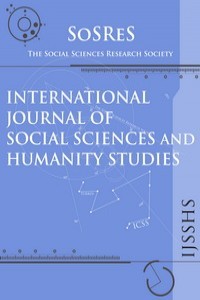MODELING MONETARY POLICY RULES IN THE MENA COUNTRIES: ISSUES AND EVIDENCE
MODELING MONETARY POLICY RULES IN THE MENA COUNTRIES: ISSUES AND EVIDENCE
Taylor Rule, Monetary Policy Exchange rate,
___
- Alper, Emre and Hatipoglu, Ozan. (2006) “Taylor Rule Estimation in Emerging Markets” Bogazici University
- Ball, Laurence (2000), “Policy Rules and External Shocks”, NBER Working Paper, No.7019
- Clarida Richard, Gali Jordi, and Gertler Mark. (1998), “Monetary Policy Rules in Practice: Some International Evidence” NBER Working Paper No.6254.
- Clarida Richard, Gali Jordi, and Gertler Mark. (2000), “Monetary Policy Rules and macroeconomic stability: evidence and some theory”, Quarterly Journal of Economics, 115, pp.147-180
- Filosa, Renato (2001) “Monetary Policy Rules in Some Mature Emerging Economies”, BIS Papers, No 8, pp 39-68.
- Fuhrer, Jeffrey C & Moore, George R (1995). "Monetary Policy Trade-offs and the Correlation between Nominal Interest Rates and Real Output," American Economic Review, American Economic Association, vol. 85(1), pages 219-39.
- Martin Christopher and Milas Costas (2010), “Financial Stability and Monetary Policy” Working Paper, Department of Economics, University of Bath,(05/10).
- Orphanides, Athanasios, (2003), "Historical Monetary Policy Analysis and the Taylor Rule", Journal of Monetary Economics, 50(5), pp983-1022,
- Svensson, Lars E.O. (1998), “US Monetary Policy Rule: the Case of Asymmetric Preferences”, Mimeo, Bocconi University.
- Taylor, J.B. (1993), “Discretion versus policy rules in practise”, Carnegie- Rochester Conference Series on Public Policy 39, pp. 195-214.
- Taylor, J.B. (2000), “Using Monetary Policy Rules in Emerging Market Economies in Stabilization and Monetary Policy: The International Experience” Bank of Mexico, PP.441- 457
- Başlangıç: 2009
- Yayıncı: Sosyal Bilimler Araştırmaları Derneği
MODELING MONETARY POLICY RULES IN THE MENA COUNTRIES: ISSUES AND EVIDENCE
ROLE OF TRUST IN BUILDING SOCIAL CAPITAL AND RURAL DEVELOPMENT
Zsolt BARANYAİ, Zsuzsanna Toth NAAR, Maria Fekete FARKAS
THE EFFECTS OF KNOWLEDGE ECONOMY ON THE COSTS AND COST COMPARISON OF TRADITIONAL AND DIGITAL GOODS
THE BARRIER TO SOCIAL DYNAMICS IN TURKEY: AUTHORITARIAN MENTALITY AND STATISM
Nadir ATEŞOĞLU, Öztürk AKÇAOĞLU
SOCIAL CAPITAL, LEADERSHIP AND DEMOCRACY: RETHINKING FATSA
THE ROLE OF ISLAM IN KARNATAKA
DID THE RECENT ECONOMIC CRISIS IMPACT REMITTANCES? EVIDENCE FROM TRANSITION COUNTRIES
Cristina Prochazkova Ilinitchi
THE ESTIMATION OF THE RELATIONSHIP BETWEEN WAGES AND UNEMPLOYMENT IN THE EUROPEAN UNION
THE INTERNATIONAL STUDENTS’ PERCEPTION TOWARDS THE EDUCATION QUALITY
